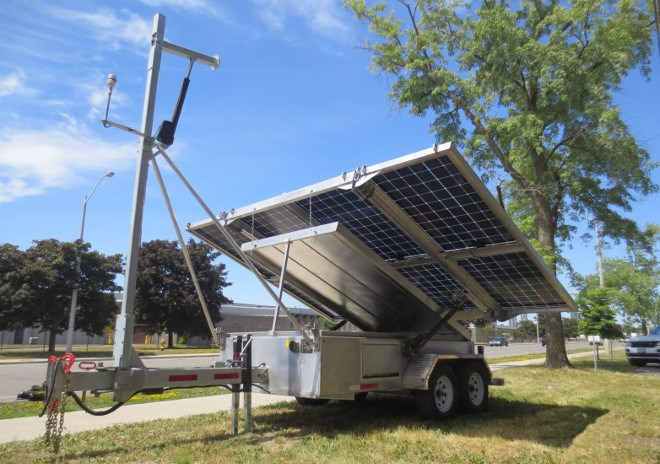A First Nation-owned gold exploration company wants to deploy mobile wind and solar electricity-generating units to power two northwestern Ontario communities.
AurCrest Gold’s renewable energy spinoff company, Wiigwaasaatig Energy, signed a non-binding letter of intent ( LOI) with Mobismart Mobile Off-Grid Power & Storage of Etobicoke.
Mobismart makes various models of towable wind and solar panel systems, complete with battery storage, which can be unpacked and ready for use within minutes of arrival at a site.
Negotiations have begun between Wiigwaasaatig and Mobismart to acquire two of these units to deploy at Cat Lake First Nation and Lac Seul First Nation. It’s hoped these discussions will lead to a lasting manufacturing and distribution relationship.
AurCrest’s cornerstone Richardson Lake gold property is within the traditional territorial lands of Cat Lake, 30 kilometres to the northeast, and Lac Seul, 120 kilometres to the south.
AurCrest has taken corporate social responsibility to a new level.
The Toronto-based gold miner’s business model involves building good faith relationships with First Nation communities.
Part of their mandate through Wiigwaasaatig (Ojibway for birch tree) is to develop renewable and sustainable energy infrastructure that the communities would eventually own and operate.
In a Sept.24 news release, AurCrest president-CEO Chris Angeconeb, a Lac Seul First Nation member, called the LOI signing a “significant milestone” that advances their energy plans and partnerships with local First Nations.
“The strategic alliance between Wiigwaasaatig and Mobismart will work to deploy the renewables technology on reserve at Cat Lake First Nation and at Lac Seul First Nation, in partnership with those communities, to reduce their grid-sourced electrical consumption and to foster an environment of socioeconomic growth and wealth generation, while growing company shareholder value.”
Mobismart’s pole-mounted wind turbines can generate 3 kilowatts. The fold-out solar arrays can produce 2.4 kilowatts. The battery life is 90 kilowatts hours.
The systems are built onto an aluminum trailer that can be towed behind a pickup. These units can also be deployed and used in extreme cold weather conditions at remote mineral exploration and development sites instead of using diesel generation.




